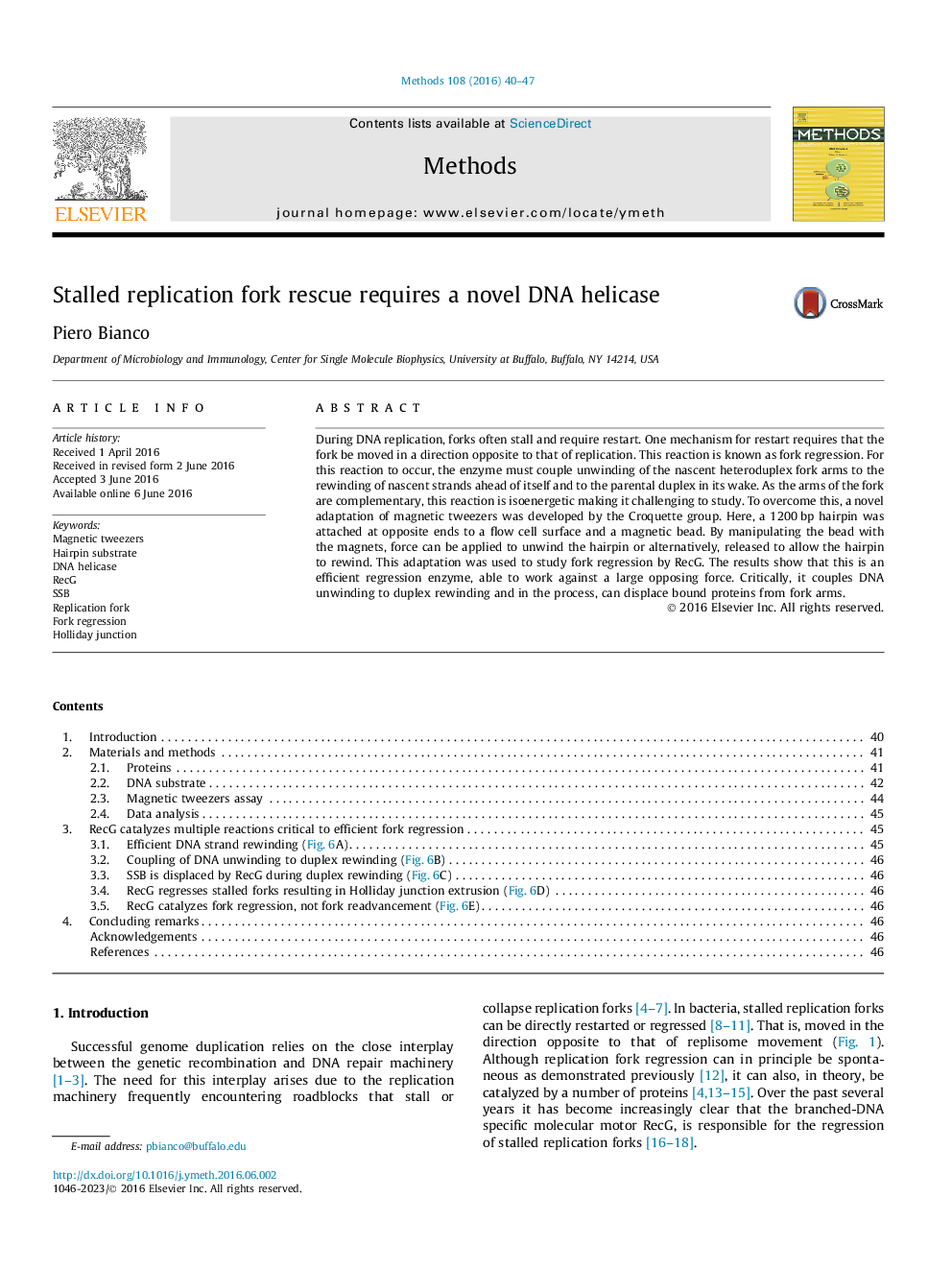| Article ID | Journal | Published Year | Pages | File Type |
|---|---|---|---|---|
| 5513616 | Methods | 2016 | 8 Pages |
â¢A description of a magnetic tweezer assay developed by the Croquette laboratory is presented.â¢The E. coli RecG was studied to reveal it is a novel DNA helicase.â¢RecG catalyzes an efficient fork regression reaction that couples DNA unwinding to duplex rewinding.â¢The enzyme works against large opposing forces and can displace bound proteins from the fork.
During DNA replication, forks often stall and require restart. One mechanism for restart requires that the fork be moved in a direction opposite to that of replication. This reaction is known as fork regression. For this reaction to occur, the enzyme must couple unwinding of the nascent heteroduplex fork arms to the rewinding of nascent strands ahead of itself and to the parental duplex in its wake. As the arms of the fork are complementary, this reaction is isoenergetic making it challenging to study. To overcome this, a novel adaptation of magnetic tweezers was developed by the Croquette group. Here, a 1200Â bp hairpin was attached at opposite ends to a flow cell surface and a magnetic bead. By manipulating the bead with the magnets, force can be applied to unwind the hairpin or alternatively, released to allow the hairpin to rewind. This adaptation was used to study fork regression by RecG. The results show that this is an efficient regression enzyme, able to work against a large opposing force. Critically, it couples DNA unwinding to duplex rewinding and in the process, can displace bound proteins from fork arms.
